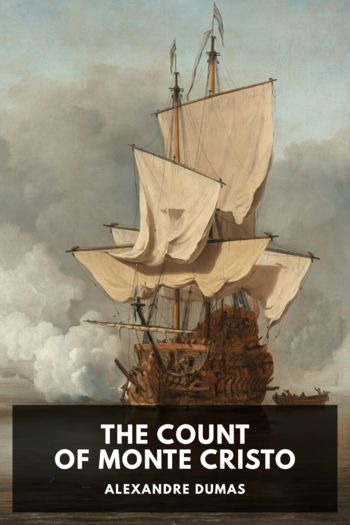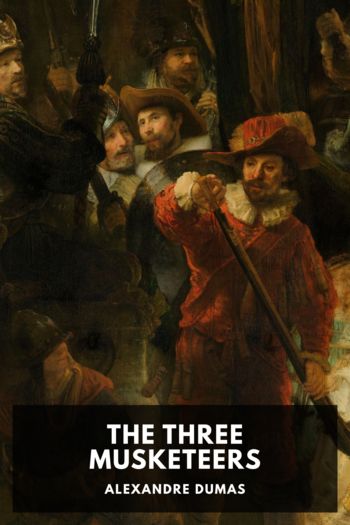The Count of Monte Cristo Alexandre Dumas (classic novels to read TXT) 📖

- Author: Alexandre Dumas
Book online «The Count of Monte Cristo Alexandre Dumas (classic novels to read TXT) 📖». Author Alexandre Dumas
“A girl of six or seven—that is, a little younger than Vampa—tended sheep on a farm near Palestrina; she was an orphan, born at Valmontone and was named Teresa. The two children met, sat down near each other, let their flocks mingle together, played, laughed, and conversed together; in the evening they separated the Count of San-Felice’s flock from those of Baron Cervetri, and the children returned to their respective farms, promising to meet the next morning. The next day they kept their word, and thus they grew up together. Vampa was twelve, and Teresa eleven. And yet their natural disposition revealed itself. Beside his taste for the fine arts, which Luigi had carried as far as he could in his solitude, he was given to alternating fits of sadness and enthusiasm, was often angry and capricious, and always sarcastic. None of the lads of Pampinara, Palestrina, or Valmontone had been able to gain any influence over him or even to become his companion. His disposition (always inclined to exact concessions rather than to make them) kept him aloof from all friendships. Teresa alone ruled by a look, a word, a gesture, this impetuous character, which yielded beneath the hand of a woman, and which beneath the hand of a man might have broken, but could never have been bended. Teresa was lively and gay, but coquettish to excess. The two piastres that Luigi received every month from the Count of San-Felice’s steward, and the price of all the little carvings in wood he sold at Rome, were expended in earrings, necklaces, and gold hairpins. So that, thanks to her friend’s generosity, Teresa was the most beautiful and the best-attired peasant near Rome.
“The two children grew up together, passing all their time with each other, and giving themselves up to the wild ideas of their different characters. Thus, in all their dreams, their wishes, and their conversations, Vampa saw himself the captain of a vessel, general of an army, or governor of a province. Teresa saw herself rich, superbly attired, and attended by a train of liveried domestics. Then, when they had thus passed the day in building castles in the air, they separated their flocks, and descended from the elevation of their dreams to the reality of their humble position.
“One day the young shepherd told the count’s steward that he had seen a wolf come out of the Sabine mountains, and prowl around his flock. The steward gave him a gun; this was what Vampa longed for. This gun had an excellent barrel, made at Brescia, and carrying a ball with the precision of an English rifle; but one day the count broke the stock, and had then cast the gun aside. This, however, was nothing to a sculptor like Vampa; he examined the broken stock, calculated what change it would require to adapt the gun to his shoulder, and made a fresh stock, so beautifully carved that it would have fetched fifteen or twenty piastres, had he chosen to sell it. But nothing could be farther from his thoughts.
“For a long time a gun had been the young man’s greatest ambition. In every country where independence has taken the place of liberty, the first desire of a manly heart is to possess a weapon, which at once renders him capable of defence or attack, and, by rendering its owner terrible, often makes him feared. From this moment Vampa devoted all his leisure time to perfecting himself in the use of his precious weapon; he purchased powder and ball, and everything served him for a mark—the trunk of some old and moss-grown olive-tree, that grew on the Sabine mountains; the fox, as he quitted





Comments (0)